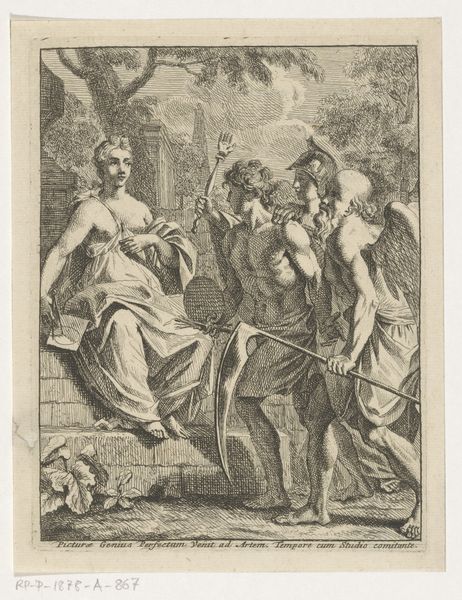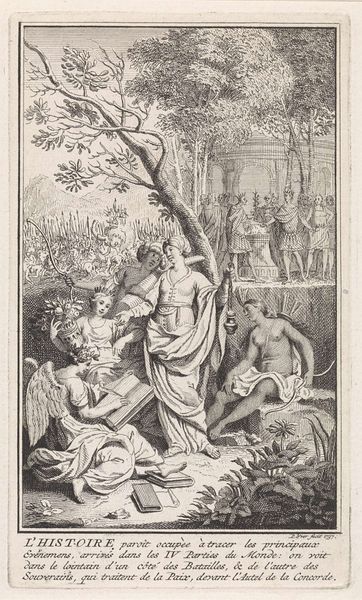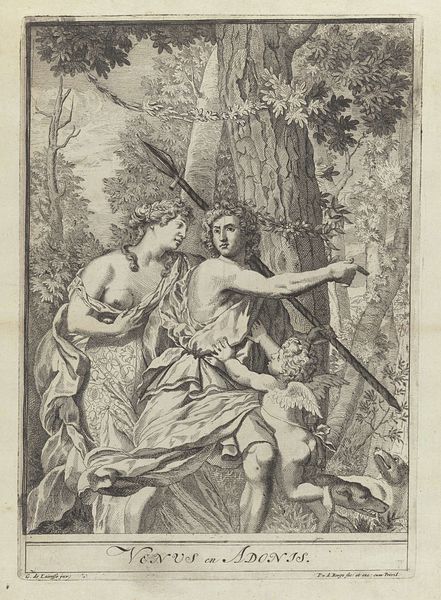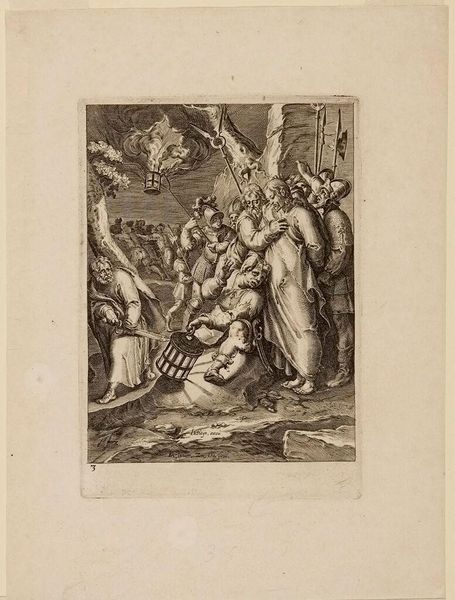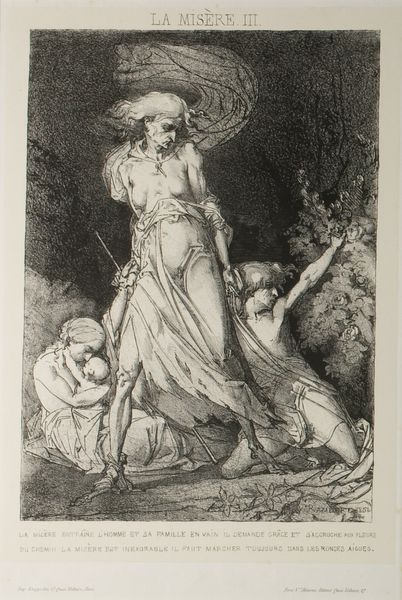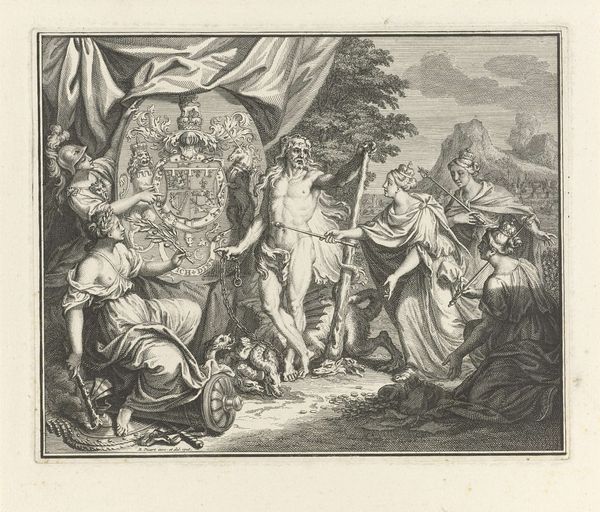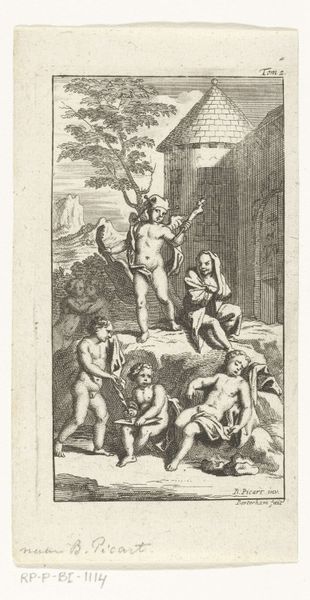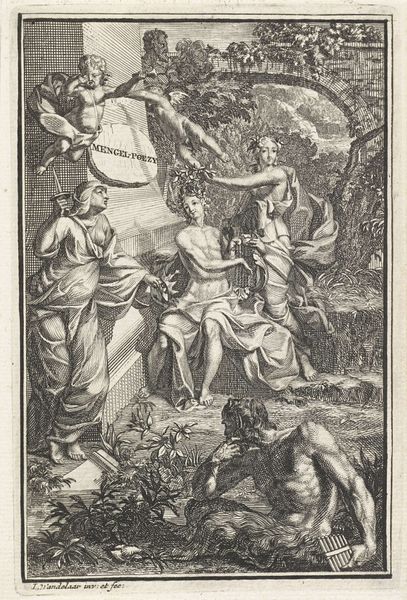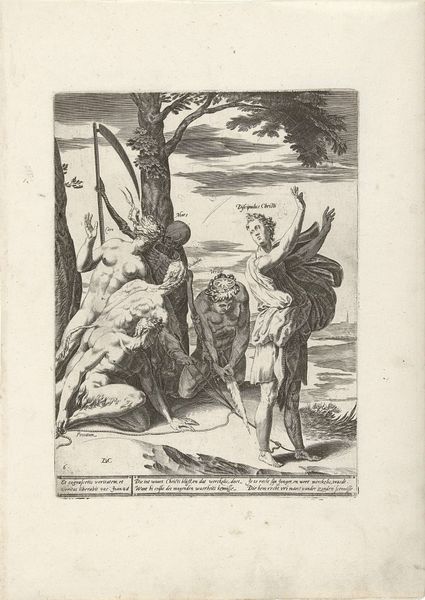
engraving
#
portrait
#
baroque
#
old engraving style
#
history-painting
#
engraving
Dimensions: height 139 mm, width 81 mm
Copyright: Rijks Museum: Open Domain
This print, etched by Bernard Picart in 1773, depicts the poet Ovid accompanied by two muses in a serene landscape. Here, we see symbols deeply rooted in classical antiquity. The muses, bestowers of inspiration, flank Ovid, one crowning him with laurel, signifying poetic triumph. Below, swans glide, sacred to Apollo and emblems of harmony and grace. Even the mischievous Cupid overhead, adds layers of meaning, symbolizing the erotic themes Ovid often explored. Consider how similar motifs appear across time. The laurel wreath, for instance, evolved from ancient Greece to adorn victors and poets, resurfacing in Renaissance art and beyond. This symbol, laden with cultural prestige, reveals a deep, collective memory where classical ideals are continually re-evaluated and integrated into new artistic expressions. These images possess a potent emotional charge, engaging us on a subconscious level. Just as in dreams, where symbols condense complex feelings, Picart's etching speaks to a profound longing for artistic recognition and immortality. We can see how symbols like these have not been linear, but cyclical, constantly resurfacing.
Comments
No comments
Be the first to comment and join the conversation on the ultimate creative platform.

